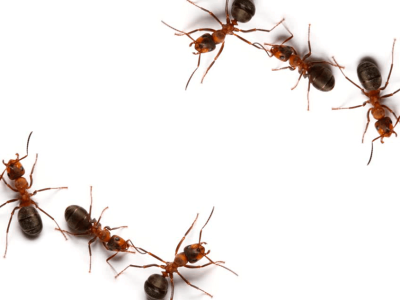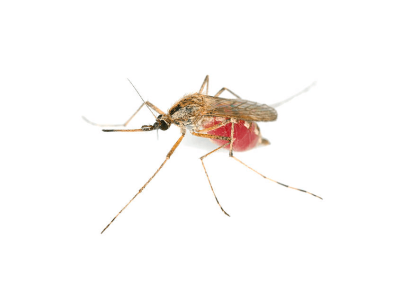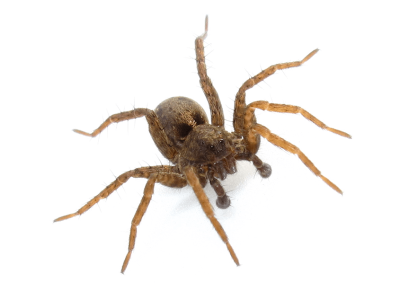Common Pests in Central Texas

Roaches
Bed bugs have small, flat, oval-shaped, wingless bodies. Adults are brown in color, although their bodies redden after feeding. Full-grown bed bugs move relatively slowly and measure between 4 to 5 mm. Homeowners sometimes have the misconception that bed bugs are too small to see with the naked eye. The nymphs may be small and difficult to see, but the adults are detectable with the naked eye and may be found in the cracks and crevices they use to hide.

Fire-Ants
The red imported fire ant (Solenopsis invicta), also known as the fire ant or RIFA, is a species of ant native to South America. The red imported fire ant is native to South America but it has been accidentally introduced in Australia, New Zealand, several Asian and Caribbean countries and the United States. The red imported fire ant is polymorphic as workers appear in different shapes and sizes.

Termites
There are three major types of termites found in the United States: subterranean, drywood, and dampwood. Three of the more common home-invading termite species are Eastern subterranean termites, Pacific dampwood termites, and Southeastern drywood termites.

Mosquitos
Mosquitoes are best known for the habits of the adult females which often feed on blood to help generate their eggs. The lesser-known side is that mosquito adults, males and females, also feed on nectar from flowers. Their immature stages usually are located in standing, preferably stagnant, water.

Silverfish
Capable of thriving in most climates, silverfish prefer to dwell in dark, damp areas such as basements, attics, kitchens and bathrooms. They are especially attracted to paper and damp clothing. Commonly found in stored boxes in garages and sheds. Silverfish feed on carbohydrates, particularly sugars and starches. Cellulose, shampoos, glue in books, linen, silk and dead insects may be food sources. Have been found in unopened food packages.

Fleas
Adult fleas are approximately 2.5 mm long and are dark in color, ranging from brown to reddish brown. Fleas are wingless, although they are capable of jumping large distances from host to host as a result of their six long legs. Individual fleas are difficult to kill by hand and typically require chemical treatment. The bodies of fleas are thin and flat, allowing for easy movement through an animal’s fur. Their bodies are also covered in hair that serves to root them to the host. Adults have mouthparts which are used to extract the host’s blood.

Bedbugs
Bed bugs have small, flat, oval-shaped, wingless bodies. Adults are brown in color, although their bodies redden after feeding. Full-grown bed bugs move relatively slowly and measure between 4 to 5 mm. Homeowners sometimes have the misconception that bed bugs are too small to see with the naked eye. The nymphs may be small and difficult to see, but the adults are detectable with the naked eye and may be found in the cracks and crevices they use to hide.

Rodents
Central Texas is home to many different types of rodents. Rats, Mice, Squirrels, Gophers, & Nutria are all native to this area and if left unchecked can cause homeowners a pretty penny in property repairs.

Spiders
Tens of thousands of spider species have been identified throughout the world. These arachnids have eight legs and two body segments. Spiders have three or four pair of eyes. Spiders do not have chewing mouthparts and commonly utilize digestive enzymes in their saliva to break prey down before consuming it. Additionally, the gut of a spider is too narrow to allow for consumption of large food particles. Almost all spider species are predators, although one plant-feeding species has been documented.
SAN ANTONIO BEST PEST CONTROL SERVICE. FREE INSPECTIONS & ESTIMATES.
254-855-6647



iPest services San Antonio, Bellmead, China Spring, Crawford, Elm Mott, Gatesville, Hewitt, Lacy Lakeview, Lorena, Mart, McGregor, Moody, Oglesby, Robinson, Riesel, Speegleville, Temple, Valley Mills and the surrounding communities. Call on us for the highest quality pest control, bedbug removal, and any other extermination needs. 254.855.6647
Latest in Pest Control

Tackling Tick Infestation: Comprehensive Pest Solutions
Dealing with a tick infestation can be a daunting task for homeowners in Waco and beyond.

Common Rodent Species in Texas (and What You Need to Know)
Rodents are some of the most adaptable and widespread creatures on the planet. Texas, with its diverse habitats ranging from arid deserts to lush wetlands, is home to a variety of rodent species. While some are harmless, others can pose health and property risks, making it vital to understand the

Termite Tips Every Homeowner Should Know
Termites are silent destroyers. They can lurk in your home for years, causing severe damage before you even realize they’re there. These pesky insects are responsible for billions of dollars in property damage annually, making effective termite detection crucial for every homeowner. This guide shares eight actionable tips that will
